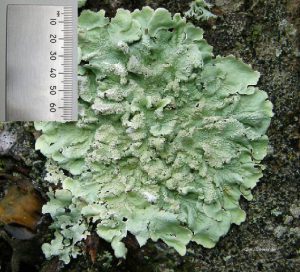 I think about genealogy for much of my day. Therefore, on a recent trip to Boston’s Museum of Science, I was again thinking about how I could apply something that I learned that day to make me a better genealogist. Thankfully, the Museum has a new(er) exhibit that is designed to teach participants how to use context clues to properly date an old schoolhouse. The exhibit points to evidence that helps users to identify when the schoolhouse closed – specifically, drawing their attention to portraits of U.S. Presidents surrounding the room, concluding with Richard Nixon. (The students in my group eventually determined that the school probably closed between 1969 and 1974.) As a student who studied Public History in graduate school, the exhibit is fantastic. A perfect blend of education, logic, and most importantly, fun… Continue reading Creative dating
I think about genealogy for much of my day. Therefore, on a recent trip to Boston’s Museum of Science, I was again thinking about how I could apply something that I learned that day to make me a better genealogist. Thankfully, the Museum has a new(er) exhibit that is designed to teach participants how to use context clues to properly date an old schoolhouse. The exhibit points to evidence that helps users to identify when the schoolhouse closed – specifically, drawing their attention to portraits of U.S. Presidents surrounding the room, concluding with Richard Nixon. (The students in my group eventually determined that the school probably closed between 1969 and 1974.) As a student who studied Public History in graduate school, the exhibit is fantastic. A perfect blend of education, logic, and most importantly, fun… Continue reading Creative dating
Category Archives: Research Methods
Your questions answered
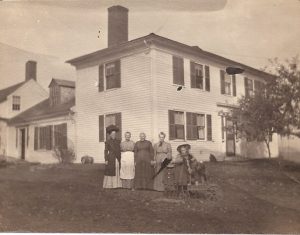
Sometimes we all, like Tennessee Williams, depend on the kindness of strangers – whether we realize it or not. While I’ve always shared my family research and stories, it has been only recently that I’ve come to understand how initiative, serendipity, and luck work together.
Four families – all my cousins – have lived in My Old House for the last 227 years, fine New England families who undoubtedly followed the old axiom “Use it up, wear it out, make it do, or do without.” Continue reading Your questions answered
ICYMI: Family papers
[Author’s note: This blog post originally appeared in Vita Brevis on 19 August 2015.]
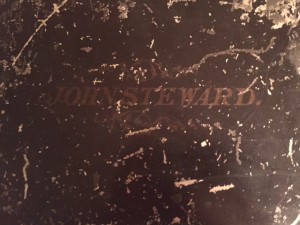 My grandfather died almost 25 years ago, and sometime before that he gave me a box of “family papers.” The box itself is rather striking: a metal strong box, easily portable, with my great-great-grandfather John Steward’s name stenciled on top in fading paint. Inside the box are not just family papers, but intriguing (and, of course, unidentified) daguerreotypes and examples of other early photographic processes, along with materials treating the family of my great-grandmother, Margaret Atherton (Beeckman) Steward (1861–1951). Continue reading ICYMI: Family papers
My grandfather died almost 25 years ago, and sometime before that he gave me a box of “family papers.” The box itself is rather striking: a metal strong box, easily portable, with my great-great-grandfather John Steward’s name stenciled on top in fading paint. Inside the box are not just family papers, but intriguing (and, of course, unidentified) daguerreotypes and examples of other early photographic processes, along with materials treating the family of my great-grandmother, Margaret Atherton (Beeckman) Steward (1861–1951). Continue reading ICYMI: Family papers
ICYMI: Researching famous people

[Editor’s note: This blog post originally appeared in Vita Brevis on 2 July 2015.]
Census records, passport applications, draft cards: many people are familiar with these resources because of their ability to tell us more about our own family history. However, they are often underutilized as a tool for understanding the lives of famous individuals. One notable celebrity of the early twentieth century who left quite a trail of records was George Herman “Babe” Ruth, perhaps the most well-known American baseball player of all time. Because of this, we are able to construct a biographical narrative of his experiences using records available to the public which were recorded during his lifetime. In this entry, we will discuss some of these records and precisely what they tell us about the life of Babe Ruth. Continue reading ICYMI: Researching famous people
Lost generations

One of the trends in my ancestry is the curious one whereby, when given the choice between staying in a locale or moving on, my nineteenth-century forebears often remained behind as other relatives ventured further west. One of the sadder family stories is covered in the 1999 book Intimate Frontiers: Sex, Gender, and Culture in Old California, by Albert L. Hurtado, and concerns my great-great-great-uncle John Henry Beeckman (1818–1850).
Uncle John was the eldest son of Henry Beeckman and Catherine McPhaedris Livingston, and the family was a prosperous one in the days before the Civil War. That they were socially acceptable to New Yorkers and Virginians alike is suggested by the fact that John H. Beeckman married Margaret Gardiner in 1848 at the Virginia plantation of the bride’s brother-in-law, former President John Tyler. Still, John Beeckman was a young man, fired up by the discovery of gold in California, and in 1849 he left bride and newborn son to travel west. Continue reading Lost generations
The stranger in my genes
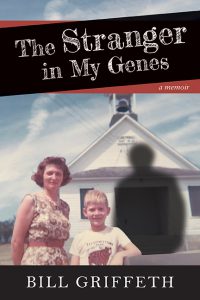 When I was writing my new book, The Stranger in My Genes – about the DNA test I took that shockingly suggested my father wasn’t really my father – I thought my story was unusual, if not unique. Boy, was I wrong.
When I was writing my new book, The Stranger in My Genes – about the DNA test I took that shockingly suggested my father wasn’t really my father – I thought my story was unusual, if not unique. Boy, was I wrong.
After the ebook version was released on August 23, I almost immediately heard from several friends who told me about people they knew with similar stories.
There was the one about the man who received a DNA testing kit for Christmas one year, and – long story short – discovered a daughter he didn’t know he had. Merry Christmas. Continue reading The stranger in my genes
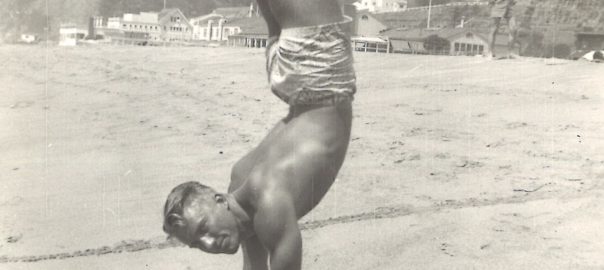
Friendly rivalries
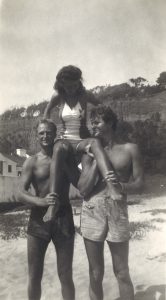
For starters, the (presumably female) scribe who wrote neatly on most of the prints dated them precisely: most are from 3 September 1944, with one or two from four days later. The focus of her interest is clear: Wayne Ehler, whose gymnastic endeavors she much admires. Two photos are marked in another hand, and perhaps this one is male, since he subtly denigrates Wayne and boasts of his own comparable accomplishments (not shown). Continue reading Friendly rivalries
Honoring a Civil War veteran
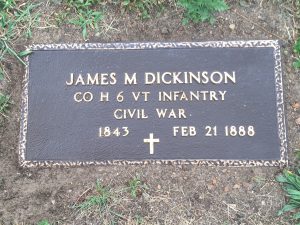 My great-great-great-grandfather, Elijah Dickinson, enlisted in Union Army in 1862. He was joined by both of his brothers, Atwood and James, as well as their sister’s husband, Nelson Cohaskey. The four of them served in Vermont’s 6th Infantry. Elijah died of disease during the war and is buried in Washington, D.C. Nelson also died while serving and is buried in Annapolis, Maryland. Atwood survived the war, moved from Vermont to Iowa, and is buried there. Continue reading Honoring a Civil War veteran
My great-great-great-grandfather, Elijah Dickinson, enlisted in Union Army in 1862. He was joined by both of his brothers, Atwood and James, as well as their sister’s husband, Nelson Cohaskey. The four of them served in Vermont’s 6th Infantry. Elijah died of disease during the war and is buried in Washington, D.C. Nelson also died while serving and is buried in Annapolis, Maryland. Atwood survived the war, moved from Vermont to Iowa, and is buried there. Continue reading Honoring a Civil War veteran
A marriage in the Savoy Chapel
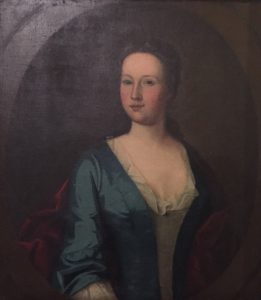
While researching the provenance of a family portrait, I recently revisited the research problem posed by my ancestress Martha (____) (Naden) Mortier, an Englishwoman who came to New York before the American Revolution with her second husband, Abraham Mortier, and her daughters Elizabeth[1] and Ann Naden. As I’ve mentioned before, occasional Google searches on intractable research questions can sometimes yield surprising results, now that so many original documents have been digitized and made available online.
In this case, I went to Ancestry.com to see what I might find. Previous searches on John Naden, the father of Elizabeth and Ann, had never yielded information on his wife, Martha, although her second marriage to Abraham Mortier, in 1754, has long been known. Continue reading A marriage in the Savoy Chapel
Real photos
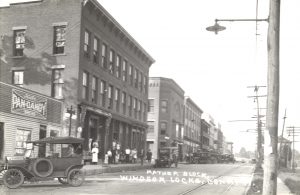 A few weeks ago, I went to one of the regular postcard shows that I frequent in the summer and came across a postcard that fills in a missing image in my family history. My entire postcard collection consists of images from Windsor Locks, Connecticut, where my Italian ancestors settled and lived for multiple generations. I have many of the mass-produced ones as well as some real photo postcards that show the flooding of the Connecticut River in 1936 and others showing houses that no longer stand. Continue reading Real photos
A few weeks ago, I went to one of the regular postcard shows that I frequent in the summer and came across a postcard that fills in a missing image in my family history. My entire postcard collection consists of images from Windsor Locks, Connecticut, where my Italian ancestors settled and lived for multiple generations. I have many of the mass-produced ones as well as some real photo postcards that show the flooding of the Connecticut River in 1936 and others showing houses that no longer stand. Continue reading Real photos